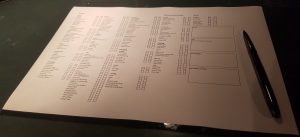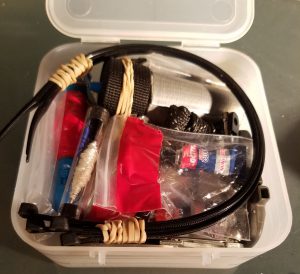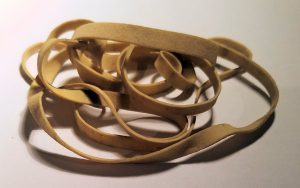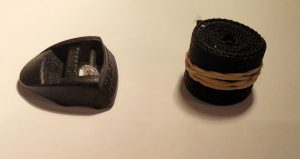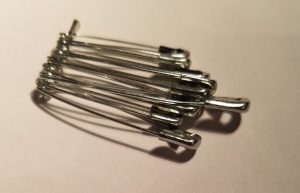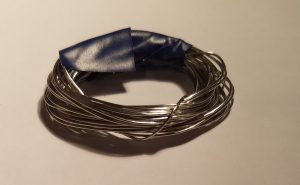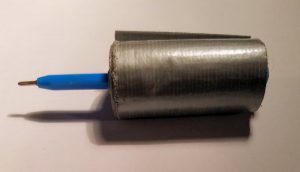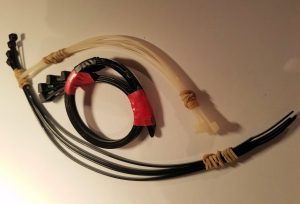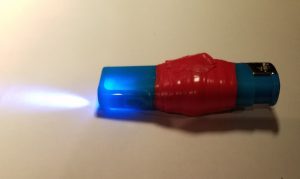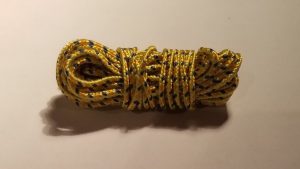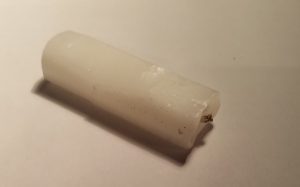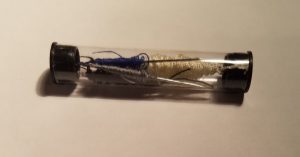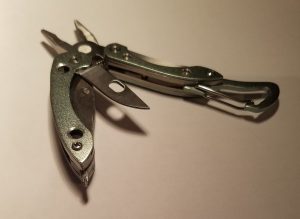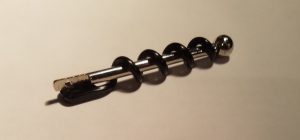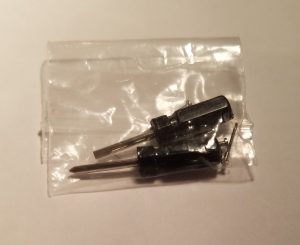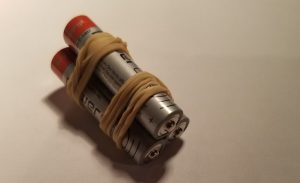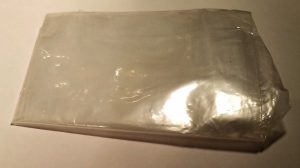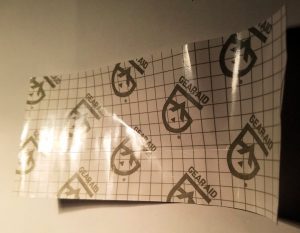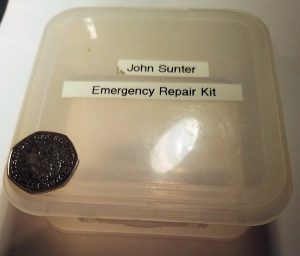In just a few weeks I’ll be embarking on the most ambitious trip of my life, to Easter Island, the Antarctic Peninsula, Patagonia, The Falkland Islands, Argentina and Chile.
The trip is to celebrate my 50th birthday, it will eclipse anything that I’ve done before and will be my first
adventure on a cruise ship.
Obviously I have an established/proven system for packing which has already begun in earnest (packing sheet shown above, ready to be filled in).
This is also the time of your when I review all of my gear and equipment.
Ripped clothes off to the menders, broken or damaged things to be repaired, replace things that are just worn out, change battery’s in torches, sharpen penknives etc.
It’s also important to open things like first aid kits and check all of the equipment inside is still functioning and in date.
On that subject, this weeks blog is about my emergency repair kit (or ERK as I call it).
As I go through the contents, I hope to inspire other people to pack one of their own, for future trips.
Some years ago, I did a few courses in Alpine mountaineering and the Alpine style of going light.
Although I decided not to continue with it as a hobby, I learned lots of usefull things, and one of them was the philosophy of travelling ultra light.
Traditionally, outdoor people take things like a spare torch, a spare waterproof and such like.
In the Alpine style, everything is kept to the bare minimum of essentials (to the point sometimes off sawing the handles off tooth brushes and drilling holes in spoon handles).
A minimal first aid kit and an emergency repair kit are carried to put you and your equipment back together if something goes wrong.
Although designed for the high mountains miles from anywhere, I’ve applied mine so it can be used in lots of different environments and provides peace of mind wherever I go.
The whole kit laid out on my work table.
On the bottom left, is the plastic box I carry it in (from the £ shop, you can guess what it cost :).
I’ll go through the items in order. Their inclusion should be self explanatory, but I’ll add notes where necessary.
1. Rubber bands
I wrap them around the outside of the box to make it extra secure.
2. Replacement rucksack clip and spare webbing
A bit difficult to see in this picture, but the thing on the left, is a replaceable main rucksack clip. It has a screw across the middle so it can be re-attached.
The webbing on the right is the old fashioned way this used to be done, buy tying a tape know (and useful in its own right).
3. Superglue
Always store in small plastic bags. that way if they burst, they won’t destroy other contents in the box.
Ever wonder why nobody had heard of superglue before the Vietnam war ?. It was used for in-field emergency trauma care.
4. Safety pins
They have numerous uses (they can even be used as fish hooks). I’ve used them in the past, with an airline blanket to make a serviceable sleeping bag.
5. Stainless steel wire
6. Small stubby pen, wrapped with gaffa/duck tape
Something simple like a pen, is easily forgotten.
Watching the A team in my youth, and they used with some aluminium poles, a polythene sheet and a lawnmower to make a microlight, after being locked in a shed. I’ve never built anything so ambitious, but this stuff has too many practically uses to even list here.
7. Cable ties of various sizes
8. Lighter with electrical tape
Ability to light a fire may be useful. Electrical tape can be used for jobs too fine for the duck tape.
This single use lighter was bought from the £ shop and featured a small torch, adding additional functionality to the kit.
9. Lightweight Para-cord
Bought from Cotswold outdoors, 2 metres packs much smaller than normal “green” para-cord, but can hold body weight (mine, which is quite a lot).
10. Small piece of candle shaved square
I borrowed this from the tobacco tin survival kit in the SAS survival handbook.
With a coke can, can make a simple lantern during a power failure or used on its own to assist in fire-lighting.
11. Sewing kit in a plastic container
Has a few different colours of thread, 4 standard needles, some really thick thread and a sale makers needle
for bigger jobs.
12. Small Multi-tool
Features a knife, bottle/can opener, pliers, nail-file and multiple screwdrivers.
13. Collapsible corkscrew
A pure luxury, but it would be awful to be in a situation where you have a bottle of wine and no means to open it !.
14. Spectacle repair kit
Some small screws, 2 small screwdrivers and a simple magnifying glass. £1.50 from Tesco.
15. 3 AAA batteries
Spares for my head-torch.
16. Plastic bags
Can be used to carry/purify water, waterproof important objects and even make a window for a survival shelter.
17. Tenacious tape
Tape for repairing clothing like sleeping bags, waterproof jackets and stuff like that. Expensive, but it performs near permanent repairs, wherever you are.
Finally, the empty box with a 50p coin to show its size.
I hope you found some of this interesting, next week I’ll be talking adventure first aid kits.
Thanks once again for reading, the search for adventure continues…
